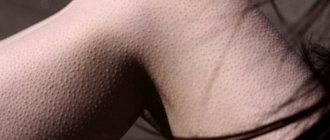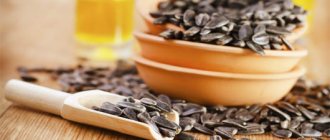Signs of vitamin deficiency in children and adults
Catalysts that cause vitamin deficiency of vitamins A, B, C and others are divided into external (food, environmental, etc.) and internal (caused by dysfunction of internal organs).
Among the nutritional prerequisites, the following reasons for the development of vitamin deficiency are distinguished:
- Unbalanced diet.
- Early or incorrect introduction of complementary foods to infants.
- Fasting, strict diets.
- Consumption of poor quality products.
- Irrational heat treatment and improper storage of food.
- The use of medications that block the normal absorption of vitamins by the body.
In addition to food reasons for the appearance of severe vitamin deficiency, there are such external prerequisites for its development as:
- Extreme living conditions (long stay in cold/hot latitudes, high in the mountains).
- Severe or prolonged stressful conditions.
- Alcohol abuse, nicotine and drug addiction.
- Living in unfavorable environmental conditions.
- Excessive physical activity.
It is also necessary to mention internal prerequisites caused by diseases and disorders of the internal organs. These include:
- Deviations in the functioning of the digestive tract.
- Insufficient level of development of the gastrointestinal tract (in children).
- Disorders of the endocrine system.
- Weak defenses of the body.
- Malfunctions in the vitamin absorption system. They manifest themselves in disruption of transport and enzymatic functions, permeability of cell walls, as well as deviations in the metabolism of vitamins.
- The presence of parasites in the body.
- Dysbacteriosis.
- Liver and kidney diseases.
Signs of vitamin deficiency
The difference in symptoms depends on the lack of a specific vitamin - A, B, C, D, E, PP, K. Common signs are dry skin, changes in its pigmentation, the appearance of spider veins, acne, microcracks. The top layer of skin dries to the point of scaly desquamation.
Digestive system disorders manifest themselves in lack of appetite, changes in taste perception, diarrhea or constipation. A person loses body weight, loses weight.
Bleeding gums appear, the enamel on the teeth becomes thinner, making them sensitive to hot food, cold drinks, sour fruits, and sweets.
Hair and nails become brittle, nail plates turn yellow, and hair falls out.
Muscles often cramp. Bruises appear on the body. Vision deteriorates. Joint and bone pain appears. Sexual desire decreases.
The general well-being of a person worsens:
- fatigue and weakness appear;
- annoying drowsiness, irritability;
- apathy and depression sets in;
- dizziness and headaches appear;
- sleep is disturbed.
Mood swings accompany a lack of any vitamin. The manifestations of vitamin deficiency vary. Only a doctor can determine what exactly the body lacks.
Vitamin deficiency: symptoms
Depending on which vitamin the body lacks, the signs of vitamin deficiency can vary greatly. Below is a list of symptoms that occur with a lack of vitamins A, B, C, D, E, PP, K.
- Vitamin deficiency on the skin manifests itself in the form of such conditions as: dryness, itching, burning, hyperpigmentation, increased skin pattern, decreased elasticity, the appearance of spider veins, rashes in the form of acne and pimples, the formation of small weeping erosions, dry scales and microcracks, the appearance stretch marks and wrinkles. In some cases, the top layer of skin may peel off.
- From the digestive system, there is a decrease in appetite, diarrhea or constipation, weight loss, and vomiting.
- On the part of the oral cavity, bleeding gums, thinning of tooth enamel, increased sensitivity of teeth to hot, cold, sweet, and sour foods, slowed tooth growth in children, and tooth loss in adults may occur.
- In hair and nails, fragility, separation, yellowing and deformation of the nail plates, and hair loss are observed.
- Muscle cramps can be diagnosed.
- From the circulatory system: the appearance of bruises, bleeding gums, hemorrhage into blood vessels.
- From the organs of vision: “night blindness”, decreased visual acuity, feeling of sand under the eyelids.
- From the musculoskeletal system: fragility of bones, pain in joints and bones, disorders of the development of the musculoskeletal system in children.
- General condition of the body: chronic fatigue syndrome, weakness, drowsiness, irritability, apathy, depression, dizziness, sleep disturbances, headaches, mood swings.
The ways in which vitamin deficiency manifests itself may vary. Therefore, to establish an accurate diagnosis, you need to consult a doctor.
Treatment of vitamin deficiency
Treatment of vitamin deficiency consists of taking vitamins that are found in the body in insufficient quantities. For this purpose, special complexes or preparations can be used. The most popular are Undevit, Supradin, Decamevit, etc. Such drugs should only be prescribed by a doctor after clarifying the patient’s general condition and establishing a vitamin deficiency.
Nutrition plays an equally important role. So, depending on what deficiency is missing, you should enrich your diet with the appropriate products:
- A – carrots, high-quality butter, beans, beets, pumpkin and beef liver.
B1 – buckwheat, pork, potatoes (boiled or baked), oatmeal, nuts and rice.- B2 – milk, almonds and lean pork.
- B3 – eggs, fish, chicken, peanuts, prunes and cheese.
- B5 – whole grain bread, fish and meat.
- B6 – liver, bran, sprouted wheat grains.
- B9 – beets, beans, carrots, lettuce and green vegetables.
- B12 – eggs and dairy products.
- C – citrus fruits, cabbage, apples, kiwi and rose hips.
- D – cottage cheese, fish oil, mushrooms and butter.
- R – beef liver, milk and nuts.
In order to maintain the maximum vitamin content in foods, they must be stored, prepared and consumed correctly. So, you should store food in a cool, dark place. Greens, fresh vegetables and fruits cannot be stored for long periods of time and do not need to be subjected to long heat treatment during cooking. It is better to bake meat and fish in the oven or steam it. The finished dish must be consumed immediately after preparation.
Some folk methods will also help to cope with vitamin deficiency:
- Combine freshly squeezed carrot or pumpkin juice with a small amount of honey. Drink this cocktail every day.
- Sprouted grains of wheat, peas or beans are a storehouse of vitamins and useful minerals.
- Rosehip decoction is a unique remedy that significantly improves health, tones the body and eliminates deficiency of vitamins A, B2, E, C, P and K. To prepare the drink, you need to put the berries in a heat-resistant container (for example, a thermos) and pour boiling water over them. Cover and let sit for several hours. Drink as tea or instead of water.
- Viburnum infusion can also replenish the balance of many vitamins. To prepare it, pour one tablespoon of berries into 250 ml of boiling water and leave for 4-5 hours. Strain the finished drink and drink ½ glass twice a day.
- Rowan infusion also has a high concentration of beneficial substances. To prepare a vitamin drink, you need to chop the berries, pour them into a thermos and pour boiling water over them. Leave for three to four hours, then strain. Drink 1/3 glass three times a day.
- The folk vitamin remedy, which has a rich vitamin and mineral composition and a pleasant taste, is extremely popular. To prepare the mass, mix and chop raisins, lemon, cranberries, dried apricots and walnuts in equal proportions. Pour the resulting mixture with honey and take 1 tablespoon daily in the morning.
Vitamin deficiency in children
Children suffer from a lack or absence of vitamins in the body more often than adults. This is due to their fragile immune system and insufficient development of the gastrointestinal tract.
READ ALSO: Is it possible to smear a boil with iodine: what are the consequences if you burn a boil?
The state of vitamin deficiency can lead to a number of serious diseases, such as rickets and ichthyosis. Therefore, when the first signs of vitamin deficiency appear (with vitamin deficiency in the hair, vitamin deficiency on the fingers, lips or feet), urgently take the child for a consultation with a pediatrician.
Spring vitamin deficiency. How to avoid it?
What are the main signs and symptoms that you have spring vitamin deficiency? How to avoid it? What are the best vitamins to take?
Spring vitamin deficiency. How to avoid it?
Vitamin deficiency is a disease that occurs as a result of prolonged deficiency of vitamins due to an inadequate diet. Usually, vitamin deficiency occurs in early spring after the long winter months, when we experience a significant lack of fresh fruits and vegetables rich in vitamins and minerals in the food we eat.
Signs of vitamin deficiency:
- peeling of the skin;
- brittle nails;
- hair loss;
- bleeding gums;
- frequent headaches;
- fast fatiguability;
Subsequently, vitamin deficiency can lead to more serious problems: dysfunction of the gastrointestinal tract, visual impairment.
Unfortunately, most of us do not take vitamins very seriously: we know that they exist and are necessary for our body, and yet we do little to saturate our body with them.
Vitamins are nutrients found in trace amounts in all organic materials. Simply put, they are catalysts necessary for the occurrence of any biological processes. Vitamins, in interaction with enzymes, stimulate virtually every function of the body: from the formation of blood cells, bones, teeth and skin, the transmission of nerve impulses, the functioning of the immune system, the digestion of food - to the reproductive function.
Maintaining life is impossible without including a certain amount of vitamins in our diet. Cereals, nuts, dairy products, vegetable oils and, of course, fresh vegetables and fruits are rich in vitamins. Nutritionists recommend eating 5-7 servings of fruits and vegetables daily (on average, one serving is equal to one apple). In an urbanized environment with a predominance of refined and canned food, it is very difficult to follow the recommendations of nutritionists to consume the required amount of food rich in vitamins and minerals. It would be safe to say that literally every one of us needs vitamin and mineral supplements every day to maintain good health, especially between October and May.
Vitamin deficiency in women during pregnancy
During pregnancy, the mother's body places additional stress. To make it easier to endure pregnancy, as well as to provide the baby with the necessary vitamins, the expectant mother should carefully monitor her diet. Only a doctor can correct it and supplement it with the necessary vitamins. Doing this on your own is prohibited, since some vitamins cannot be taken during a certain trimester of pregnancy.
Types of vitamin deficiency in the body
The most common types of the disease:
- Vitamin A deficiency. The main indicators of a lack of this vitamin are blurred vision, anemia and symptoms of vitamin deficiency on the skin (dryness and flaking). Treatment requires dietary adjustments: inclusion of fish oil, fatty sour cream, vegetable oils, carrots, sea buckthorn, and spinach in the diet.
- Vitamin D deficiency. This vitamin is generated by exposure to sunlight. Its deficiency in the body manifests itself through increased sweating, constipation, pathology of the musculoskeletal system, irritability, and problems with normal sleep. Nutrition for vitamin D deficiency should be enriched with meat, fish, fish oil, liver, and chicken eggs.
- Lack of vitamin E. Characterized by nervous disorders, fragility of blood vessels, impaired reproductive function and dry skin. The diet should include vegetable oils, nuts, seeds, meat, eggs, and milk.
- Absence or deficiency of vitamin C. Manifests itself in the form of bleeding gums, swelling of the lower extremities, anemia, white coating on the tongue, weakness, dizziness. It is necessary to eat rose hips or a decoction of them, citrus fruits, sorrel, bell pepper, and rowan.
- Lack of vitamin K. Its symptom is bleeding and hemorrhage. You should include beef liver, spinach, and Brussels sprouts in your diet.
- Vitamin deficiency of B vitamins. A deficiency of one of the vitamins of this family - B1, B6, B12, B9 - leads to headaches, memory disorders, convulsions, insomnia, stomatitis, coordination problems, depression, tachycardia, and pathology of the hematopoietic system. The emphasis in the diet should be on eggs, liver, legumes, bananas, cheese, fresh vegetables, bread.
- Vitamin P deficiency. The main symptom is hemorrhages in the skin and mucous membranes. You should add rose hips, green tea, and citrus fruits to your diet.
Signs of vitamin deficiency - hypovitaminosis: be careful with yourself!
Clinically, hypovitaminosis does not make itself felt immediately, but after a very long period of vitamin deficiency. Nonspecific symptoms include decreased appetite, general fatigue and weakness, increased irritability, sleep disturbances, etc. As for specific symptoms , these are:
- Peeling and dry skin is a deficiency of vitamins P, A, C.
- Increased oiliness of the skin and the formation of tiny, yellowish scales on the wings of the nose, the bridge of the nose, in the behind-the-ear folds and on the earlobes, in the area of the nasolabial folds - deficiency of PP, B6, B2.
- The appearance of superficial small hemorrhages (in particular, at the base of the hair follicles) is a deficiency of P, C.
- Roughness of the skin (thighs, buttocks, etc.) – deficiency of P, A, C.
- Brittle nails (A deficiency).
- The acquisition of a yellow-brownish tint of the skin in the areas of the eye sockets , above the eyebrows, and in the cheekbones is a deficiency of RR, A.
- Cloudiness of the cornea of the eyes , dry conjunctiva - deficiency of A.
- Cracks in the corners of the eyes – deficiency of B2, A.
- A bluish tint to the lips is a deficiency of PP, C, R.
- A purple rim around the cornea of the eye is a deficiency of B12, A.
- Decreased quality of twilight vision – deficiency of B12, A.
- Cracks with yellowish crusts on the corners of the mouth - deficiency of B1, B6, B12, PP.
- Bleeding gums when brushing teeth and biting food - deficiency of P, C.
- Swelling and increase in the volume of the tongue - deficiency of B1, B6, PP.
To prevent the development of vitamin deficiency, measures should be taken at the first symptoms of vitamin deficiency. Our country is characterized by seasonal deficiency of vitamin C and deficiency of B1, B6 . Although the deficiency of the last two vitamins can be compensated by regular consumption of black bread. One way or another, self-medication for hypovitaminosis is unacceptable . Many, having discovered, for example, dry skin, run to the pharmacy for a jar of vitamins. But it's not right.
Only a doctor, after an examination, can say which specific vitamins you need, and which ones you, on the contrary, have in excess.
Vitamin deficiency: treatment
If the deficiency is minor, your doctor may prescribe medications orally. If there is a pronounced deficiency of a particular vitamin, intramuscular injections will be required. Physiotherapeutic procedures may also be required (for vitamin D deficiency).
For vitamin deficiency, not only medication, but also folk treatment helps: a decoction of rose hips, rowan, and viburnum. In addition, you can prepare a vitamin mixture from ground nuts, dried apricots, prunes, lemon, raisins and honey.
Prevention of vitamin deficiency
To protect yourself from seasonal vitamin deficiency, a balanced diet is recommended. Avoid overly strict diets and fasting, as only a rational approach to diet planning will help protect against vitamin deficiency in the body. Eat as many fruits, berries and vegetables as possible, do not forget about vegetable oils and foods of animal origin.
READ ALSO: Pimples on the back of the head in men: causes, symptoms, diagnosis and treatment
In winter and spring, when vitamins are scarce, it is recommended to sprout wheat, oats, green buckwheat, and lentils at home: green sprouts help replenish the lack of vitamins and prevent vitamin deficiency.
Clinical researches
A clinical study conducted jointly with the Union of Pediatricians of Russia proves the high efficiency, safety and tolerability of products for daily skin care of children with mild and moderate forms of atopic dermatitis and during remission, accompanied by a decrease in the quality of life of patients. As a result of therapy, the following effects of the La-Cri cleansing gel were noted:
- Gentle skin cleansing;
- Relieving redness and itching;
- Skin restoration;
- Skin nutrition.
Consumer Reviews
Lacrimosa7002 (otzovik.com)
“Literally for a couple of months I didn’t know about this La-Cri cream for dry skin. It all started when the pads on my sister’s fingers began to burst and peel a little, and the skin was peeled off in a thin film. There was no burning or itching. We immediately went to the dermatologist, my sister was in a panic: save me, help me)) The doctor was a sweet old man, like from a Soviet movie, he said: honey, we’ll help, we’ll save your hand with a kiss:)) Everything turned out to be tritely simple - vitamin deficiency. I can only wonder where it comes from, there are always fresh fruits and vegetables at home, no one in the family takes tablet vitamins.
The doctor ordered me to buy La Cree Cream for dry skin at the pharmacy and assured me that everything would be fine in a couple of days. That's how it happened))
And I really liked the cream. Dad especially liked him. He has never worn and does not wear gloves in his life, you will laugh, but he says: I can’t breathe)) Coming home after long parties with Jessica, dad began to smear his hands with this cream. The skin literally immediately becomes soft, redness and roughness are removed. Well, now about the miracle cream. Sold only in pharmacies. It does not contain fragrances or dyes, but at the same time it has a very pleasant aroma, which is present due to oils and other natural ingredients. Eliminates. Saves. Protects.
The cream can be used for children from birth, which means that the conclusion is that it is hypoallergenic. The tube is in a cardboard box, on which everything is described in great detail, accessible, understandable and in simple language, without veiled phrases.
As for the method of application, it’s still more individual, depending on what problem you have. My sister didn’t smear her entire hands, but only her fingertips, she smeared it for three days, about 4-5 times, but very little by little, and indeed after three days the skin was as good as new. To prevent and moisturize/nourish the skin, she smeared it for another five days, but only at night before bed.
Dad also rubs his hands when he has to. In severe frosts it happened twice a day, but now I don’t use it until the thaw. I also tried the cream several times after cleaning, it’s very cool.
...The box is simply a treasure trove of information.
The active components in the composition are described in percentages; it is rare to see such a detailed description. And after the composition, the components themselves, their qualities and effects on the skin are described. Excellent presentation of information, hats off to the manufacturer.
The only one. But a fairly significant disadvantage is the cost of this cream. The volume is 50 ml, and the price is 240 rubles. The date of manufacture is on the weld seam, the shelf life is 2 years. The tube is made of soft plastic, designed identically to the box. This is already the second tube, the first one ran out in a couple of weeks, and was actively used by the whole family. The information is partially duplicated (as much as there is enough space). The font is small, but easy to read.
The box contains large instructions with detailed descriptions of use for various problems.
I won’t even try to add a photo, since everything is mercilessly deleted and cut out, and if you look at others, half the review is just photos of instructions, like, the sword of Damocles didn’t get there. A regular screw-on lid, the hole is closed with a foil membrane.
The hole is small, convenient, if you consider that the cream is thick, then everything is fine. The texture is dense and oily. The aroma is very interesting, I smell the smell of mown grass and wildflowers, although there is no trace of them there, and I am also very glad that the cream does not have a characteristic pharmacy smell. This cream can be applied to any area of the skin, including the face. Despite the consistency and texture, consumption will be economical. When the cream gets on the skin, it seems to melt a little and smear perfectly, while all its fatness is felt, but at first glance it seems terrible, I’m all covered in oil :))
With such oil content, the cream is definitely not suitable for those with oily skin, but this only applies to the face, you will look like an oily pancake))
After using this cream, the skin is transformed before your eyes, it is soft, perfectly moisturized and receives sufficient nutrition.
The only downside I can mention is the cost, it’s still a bit expensive.
Everything else suits me 100%:
- can be used at any age and for any part of the body (including the face)
- good composition
- excellent properties of the cream
- quick solution to problems (in the specific case of vitamin deficiency)
- nice smell
- economical consumption.
READ ALSO: Vichy Normaderm for problem skin: review of cosmetics and reviews of Vichy Normaderm
I give it a definite 5 points and I would advise you to pay attention to this La-Cri cream if you have problems that are listed in the indications for the use of this cream.
Health and good mood to everyone!”
Leli4na (irecommend.ru)
"8 in 1! A composition that includes all the creams that I used separately! Use experience: a week or more. A miracle remedy for all irritations, redness and dermatoses (not in the acute phase. The color is interesting, the smell is specific, the feeling is a fairy tale!
B is for children, and, accordingly, for adults. Excellent composition (see photo), the result is obvious! (And on the body, too)! Perfectly moisturizes the skin, it becomes soft and velvety; The cream is perfectly absorbed without leaving behind a sticky, greasy layer. True, because of the smell, I personally only apply it at night. Before that I used panthenol, then I switched to a more budget-friendly version - dexpanthenol, and then I dabbled in calendula cream.
Conclusion: a little bit of everything, but priorities must be set. La-Cree is in the forefront!
- B.A. Shamov, I.G. Safiullina, A.B. Beshimova, T.B. Shamov, Differential diagnosis of atopic dermatitis, journal of Practical Medicine, 2011 https://cyberleninka.ru/article/v/differentsialnaya-diagnostika-atopicheskogo-dermatita
- Fokina R.A., Atopic dermatitis: stages of development of classification forms, Siberian Medical Journal, 2007 https://cyberleninka.ru/article/v/atopicheskiy-dermatit-etapy-razvitiya-klassifikatsionnyh-form
- A.N. Pampura, A.A. Chuslyaeva, Modern approaches to the treatment of atopic dermatitis in children https://cyberleninka.ru/article/v/sovremennye-podhody-k-terapii-atopicheskogo-dermatita-u-detey
Symptoms and treatment of vitamin B deficiency
Vitamin B includes a number of vitamins with very different properties. They are designated by numbers (B1, B2, B6, etc.). Almost all B vitamins can be found in yeast.
Symptoms of vitamin B deficiency
All symptoms of vitamin B1 deficiency can be found among the complaints of patients suffering from beriberi disease. Pathology is manifested by damage to nerve cells. At the beginning of the disease, the patient is worried about weakness, loss of strength, and nausea. In addition, minor disorders of the gastrointestinal tract, weakness of the heart muscle, and swelling of the lower extremities appear. After some time, paralysis of the legs, facial and phrenic nerves may occur.
Symptoms of vitamin B2 deficiency are most pronounced in a disease such as pellagra, which translated from Italian means “rough skin.” The name reflects the peculiarity of the pathology, in which the skin almost always suffers. The disease is caused by a lack of vitamin PP or nicotinic acid in the diet. A large concentration of this vitamin is found in nature in wheat germ, rye, and offal; somewhat less in low-fat meat, eggs, and yeast.
As in the case of other vitamin deficiencies, the cause of the development of pathology can be diseases of the gastrointestinal tract and insufficient intake of the vitamin from food.
Among the characteristic symptoms of vitamin B deficiency are diarrhea, dysfunction of the nervous system, and dermatitis. At the initial stage of the pathology, symptoms characteristic of gastrointestinal diseases are observed. Patients are concerned about a burning sensation in the mouth, excessive salivation, and frequent diarrhea.
The tongue of patients has a crimson-red color, the lower lip becomes swollen, and the corners of the mouth are covered with ulcers. Later, a disorder of the nervous system occurs, which is accompanied by weakness, weakness, depression, an indifferent attitude towards the outside world, sometimes reaching dementia (stupidity). After some period of time, signs of dermatitis appear on the patients’ skin. First, the skin becomes covered with red spots, turning into blisters, and in later stages of the disease turning into ulcers. The skin dries and peels. The nature of the lesion is symmetrical. Sometimes changes in the skin appear before other manifestations of the disease.
Severe cases of pathology are accompanied by exhaustion. The disease can become chronic, worsening in summer and spring and subsiding in the cold season.
Treatment of vitamin B deficiency
Treatment of vitamin B deficiency, as well as prevention of this condition, consists of saturating the diet with foods rich in vitamin B1, such as bread made from wheat or rye, legumes, oatmeal, buckwheat, offal, cod, and dairy products. A large concentration of vitamin B is found in yeast.
Patients with diseases of the cardiovascular system, as well as those suffering from polyneuritis, need bed rest. Thiamine preparations can be prescribed in the form of injections or tablets; intravenous administration is considered the most effective way of administering the drug. The course of treatment is carried out with high doses of the drug every day until a clear improvement in the condition occurs, after which the dosage of the drug is reduced by two or more times.
Patients with pellagra need rest and heat. Of the medications, patients are recommended to take nicotinic acid at least 100 mg. - in one day. In more severe cases, the daily dose of the drug is increased, divided into several doses. As you recover, the dosage of the vitamin is reduced significantly.
Nicotinic acid is prescribed in the form of intramuscular and intravenous injections, and only with prolonged use and the absence of complications from the gastrointestinal tract can the patient be recommended to take the drug in tablet form. In addition to nicotinic acid, when treating vitamin B deficiency, it is necessary to take other vitamins: vitamin B1, B2, B6 and B12.
Author of the article:
Mochalov Pavel Alexandrovich |
Doctor of Medical Sciences therapist Education: Moscow Medical Institute named after. I. M. Sechenov, specialty - “General Medicine” in 1991, in 1993 “Occupational diseases”, in 1996 “Therapy”. Our authors










